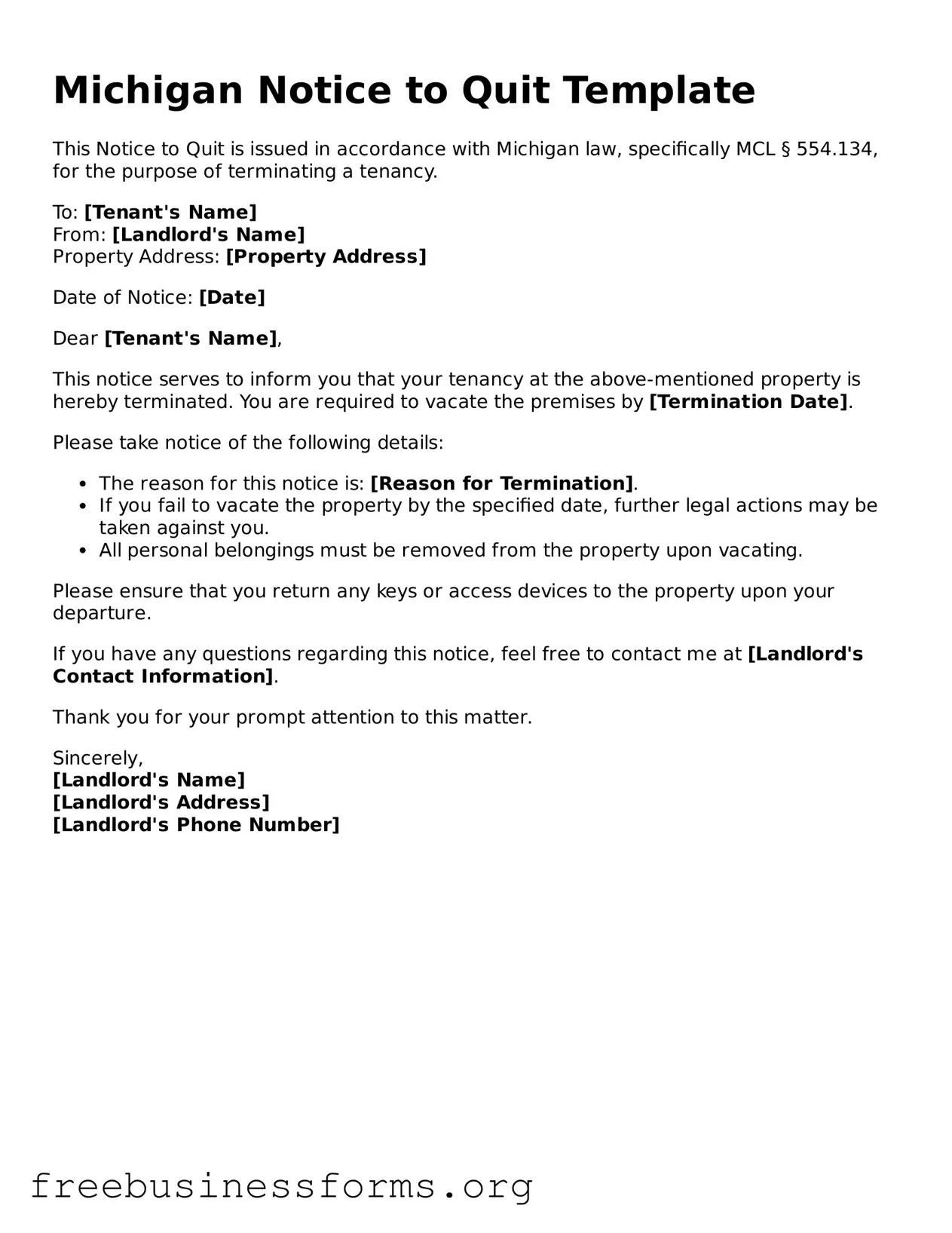Blank Notice to Quit Template for Michigan
The Michigan Notice to Quit form is a legal document used by landlords to formally notify tenants of their intent to terminate a lease agreement. This notice serves as a crucial step in the eviction process, outlining the reasons for termination and providing the tenant with a specified timeframe to vacate the premises. Understanding this form is essential for both landlords and tenants to ensure compliance with Michigan rental laws.
Open Form Here
